
Paternoy

Pictures: 19.v.2011


Pictures: 19.v.2011

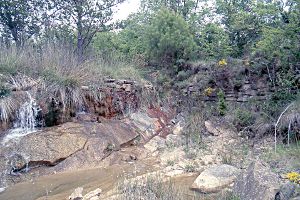
The lake rests against one of the long walls of the mill (4). Thick walls of masonry topped with some concrete form the drain towards the cárcavo (7).
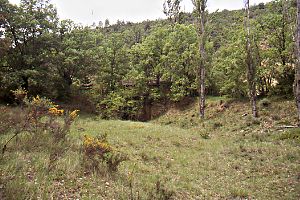
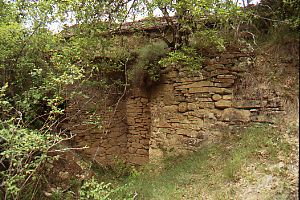

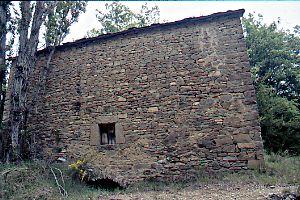
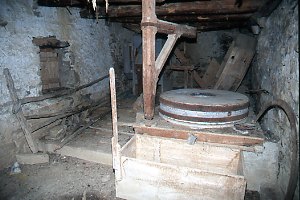
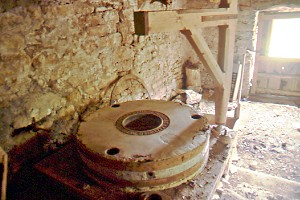
First there is a farinal with a cruz mounted in one of the corners (10). The fresh flour was collected in this wooden box and sacks to be filled where held open by the cruz. Pict 9 shows a nice specimen of this device found in the mill of Humo de Muro.
*** Alexandre Fauqueux & Cie ***
La Ferté s/ Jouarre (France)
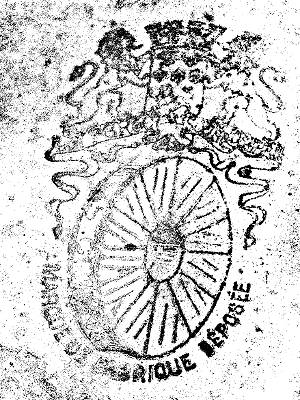
S.G.M.or Société Générale Meulière. Above the stone come the arms of the city of La Ferté with the lions and below the stone comes the text
Marque De Fabrique Déposée.
The Société Générale Meulière was created between 7 founding members in 1881. Alexandre Fauqueux joined only in 1884 and there were some quarrels with S.G.M. and Dupety-Orsel (the main competitor of S.G.M.) about the perceived quality of each make of stone.
Other French stones are found in e.g. Cortillas, Sarvisé, Alquézar, and Broto. In Alquézar and Broto a couple coming from Dupety-Orsel (or the Grande Société Meulière, G.S.M.) was running. We have also a page dedicated to the birthplaces of the stones: La Ferté sous Jouarre and Epernon.
On the wall next to the stone is an engraving in the cement. It says Año 1935.
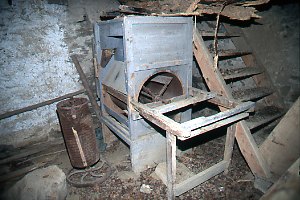
The cárcavo is choked with silt. The botana (nozzle in cement) with valve and all the control rods are in good shape. I presume there is also a wheel below the surface.